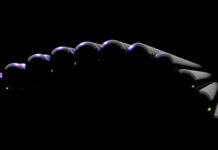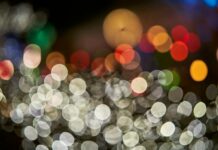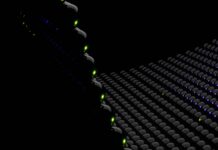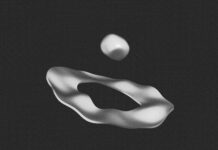Quantum Sensing Devices: Expanding Horizons in Measurement and Detection
The realm of quantum physics has ushered in a new era of technological advancements, and one of its most intriguing applications is found in the realm of quantum sensing devices. These devices harness the principles of quantum mechanics to enable ultra-sensitive measurements and detections, pushing the boundaries of what was once thought possible. Leveraging the unique characteristics of quantum states, such as superposition and entanglement, quantum sensing devices have the potential to revolutionize fields ranging from navigation and medical imaging to materials science and environmental monitoring.
At the heart of quantum sensing devices lies the fascinating and often counterintuitive nature of quantum mechanics. Unlike classical physics, where particles can be accurately described as having well-defined properties, quantum particles can exist in multiple states simultaneously, a phenomenon known as superposition. This inherent uncertainty on the quantum scale might seem puzzling, but it is precisely these principles that quantum sensing devices leverage to their advantage.
Quantum sensors encompass a diverse array of devices, each tailored to exploit quantum phenomena for specific measurement applications. One of the prominent examples is the atomic magnetometer, which utilizes the inherent magnetic sensitivity of certain atoms to detect minute magnetic fields. These sensors find applications in diverse areas, including geophysical exploration for oil and mineral resources, medical imaging, and even brain activity mapping. By capitalizing on the delicate interactions between atomic systems and external fields, atomic magnetometers offer unparalleled precision in detecting magnetic fluctuations, enabling a deeper understanding of various phenomena.
Another groundbreaking application comes in the form of quantum-enhanced imaging devices. Traditional imaging methods rely on the properties of light to capture information about an object’s spatial characteristics. Quantum-enhanced imaging takes this a step further by employing quantum entanglement to achieve improved resolution and sensitivity. This technique, known as quantum ghost imaging, involves creating entangled photon pairs, where the behavior of one photon is dependent on the other. By sending one photon toward an object and measuring the behavior of the entangled photon, it becomes possible to reconstruct an image of the object with remarkable precision, even under challenging conditions such as low light or highly scattering environments.
Quantum sensing also holds great promise in the domain of navigation and positioning. Global Navigation Satellite Systems (GNSS) like GPS have become an integral part of modern navigation, enabling precise location determination for a wide range of applications. However, these systems have limitations, particularly in environments where the satellite signals are weak or obstructed. Quantum sensors offer an alternative approach by utilizing atomic systems to measure fundamental constants like time and acceleration. This can provide highly accurate positioning information without reliance on external signals, making them resilient in GPS-denied environments and opening up possibilities for improved navigation in urban canyons, underwater, and even in space.
In the realm of materials science, quantum sensing devices are revolutionizing the way we analyze and manipulate matter at the atomic and molecular scales. Scanning tunneling microscopes, for instance, use the quantum phenomenon of tunneling to visualize individual atoms on surfaces. This ability to directly manipulate and observe matter on such a fundamental level has paved the way for innovations in nanotechnology and catalysis research. Quantum sensors are also transforming the field of spectroscopy, allowing scientists to analyze the interactions between light and matter with unprecedented accuracy. This has implications in a wide range of disciplines, from chemistry to astronomy, by enabling the detection of subtle shifts in energy levels that reveal vital information about the properties of molecules and celestial bodies.
Environmental monitoring and detection of elusive phenomena are also areas where quantum sensors are making substantial contributions. Gravitational wave detectors, like the Laser Interferometer Gravitational-Wave Observatory (LIGO), utilize the interference of laser beams to detect minuscule changes in spacetime caused by massive cosmic events such as black hole mergers. Quantum sensors are used to improve the precision of these instruments, enhancing our ability to observe and understand the most energetic processes in the universe. Additionally, quantum-based sensors are being employed in the detection of weak electromagnetic fields, which find applications in studying Earth’s magnetic field variations, detecting neural activity in the brain, and searching for elusive particles like dark matter.
In conclusion, quantum sensing devices are propelling us into an era of unprecedented measurement and detection capabilities. By harnessing the fundamental principles of quantum mechanics, these devices are pushing the boundaries of sensitivity, accuracy, and resolution across a multitude of fields. From atomic magnetometers unraveling Earth’s magnetic mysteries to quantum-enhanced imaging revolutionizing medical diagnostics, the applications of quantum sensing devices are as diverse as they are promising. As our understanding of quantum phenomena deepens and technology advances, the potential for even more innovative and transformative applications of quantum sensing devices is boundless, promising to reshape industries, expand scientific frontiers, and lead us into a future where the once unimaginable becomes reality.
Superposition and Quantum States:
Quantum sensing devices exploit the phenomenon of superposition, where particles can exist in multiple states simultaneously, enabling simultaneous measurement of various properties.
Entanglement:
Quantum sensors leverage entanglement, a unique correlation between particles, to achieve synchronized behavior and enhanced measurement precision.
Unprecedented Sensitivity:
Quantum sensors can detect exceedingly small changes in physical quantities, making them ideal for applications requiring high sensitivity, such as detecting weak magnetic fields or gravitational waves.
Enhanced Precision:
Quantum sensing devices offer unparalleled precision, enabling accurate measurement of parameters like time, acceleration, and electromagnetic fields with minimal uncertainty.
Resilience to Noise:
Quantum sensors are less susceptible to external noise and environmental interference, making them suitable for challenging environments where traditional sensors may struggle.
Non-Invasive Nature:
Quantum sensors often enable non-invasive measurements, particularly in medical and biological applications, reducing the impact on the systems being studied.
Multi-Modal Capability:
Many quantum sensing devices can measure multiple parameters simultaneously, providing a comprehensive view of complex systems and phenomena.
Potential for Miniaturization:
Quantum sensors can be designed at the nanoscale, paving the way for miniaturization and integration into various devices, from wearable health monitors to compact navigation systems.
GPS-Independent Navigation:
Quantum sensors can offer precise navigation and positioning without relying on external signals, making them suitable for areas where GPS signals are weak or unavailable.
Cross-Disciplinary Applications:
Quantum sensing devices find applications across diverse fields, including materials science, medical diagnostics, environmental monitoring, fundamental physics research, and more, highlighting their versatility and potential impact.
Quantum sensing devices stand as remarkable creations at the confluence of quantum physics and cutting-edge technology. These devices have emerged as heralds of a new era in measurement and detection, embodying the extraordinary potential of harnessing the peculiar behaviors exhibited by particles at the quantum scale.
Within the realm of quantum sensing devices, a symphony of intricate principles and ingenious engineering converges to elevate our capabilities in observing and understanding the world around us. These devices have the power to unveil the hidden facets of reality that elude classical measurement tools, opening windows into realms previously obscured by the limitations of conventional sensors.
One fascinating facet of quantum sensing is its connection to the concept of wave-particle duality. In the quantum world, particles exhibit both wave-like and particle-like behavior, challenging our intuitive understanding of physical reality. Quantum sensors leverage this duality, using matter waves to measure and detect quantities with astounding precision. This integration of quantum phenomena into the macroscopic world is a testament to the groundbreaking strides we have taken in merging theory with practice.
An essential enabler of quantum sensing devices is the concept of decoherence. In the quantum realm, particles can become entangled, their properties intertwined in ways that classical physics cannot explain. However, interactions with the surrounding environment can disrupt this delicate dance, causing entanglement to degrade—a process known as decoherence. Researchers in this field grapple with the intricate task of minimizing decoherence to maintain the quantum behaviors that enhance sensing capabilities. This pursuit has led to the development of isolation techniques, cryogenic environments, and innovative materials that shelter quantum sensors from external influences.
Quantum sensors also illuminate the profound role of uncertainty in the quantum world. Heisenberg’s uncertainty principle dictates that certain pairs of properties, like position and momentum, cannot be precisely measured simultaneously. Quantum sensing devices navigate this uncertainty by skillfully exploiting complementary measurements, allowing one property to be known with high precision while the other remains uncertain. This dance with uncertainty, coupled with the careful application of quantum correlations, enables the astounding accuracy that quantum sensors offer.
The landscape of quantum sensing is not devoid of challenges. While quantum mechanics offers a wealth of possibilities, it also presents formidable obstacles, such as the fragile nature of quantum states. These states are incredibly sensitive to their surroundings, necessitating the creation of controlled environments that shield quantum sensors from external disturbances. Additionally, the intricate design and engineering required for quantum sensors pose both technological and financial hurdles, requiring interdisciplinary collaboration to bridge the gap between theory and practical implementation.
The development of quantum sensing devices is tightly intertwined with the quantum information revolution. Quantum bits, or qubits, form the basis of quantum information processing, and the same principles that govern their behavior also underpin the operation of quantum sensors. This synergy between quantum computing and quantum sensing has the potential to yield breakthroughs in both realms, opening avenues for enhanced sensing capabilities driven by the immense computational power of quantum computers.
Quantum sensors are rewriting the narrative of measurement precision, rendering previously undetectable phenomena accessible to scrutiny. They find applications in fields as diverse as archaeology, where they uncover hidden structures without disturbing delicate artifacts, to monitoring climate change by detecting minute variations in Earth’s magnetic field. The use of quantum sensors in healthcare is equally revolutionary, enabling non-invasive imaging techniques that provide insights into cellular and molecular processes. This promises to reshape diagnostics, treatment, and our fundamental understanding of biological systems.
As we stand on the cusp of a new technological epoch, quantum sensing devices beckon us to explore uncharted territories. They beckon us to investigate the interplay of particles and waves, uncertainty and precision, and the subtle dance of entanglement in the macroscopic world. With each quantum sensor that emerges from laboratories, our capacity to unravel the mysteries of the universe deepens, and our ability to interface with the quantum realm becomes more refined. Quantum sensing devices are not mere instruments; they are portals that beckon us to peer into the quantum fabric of reality and glimpse the marvels that lie beneath the surface.


















